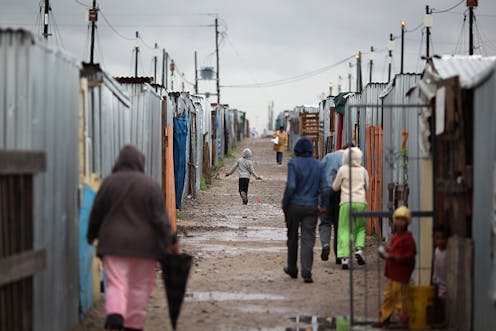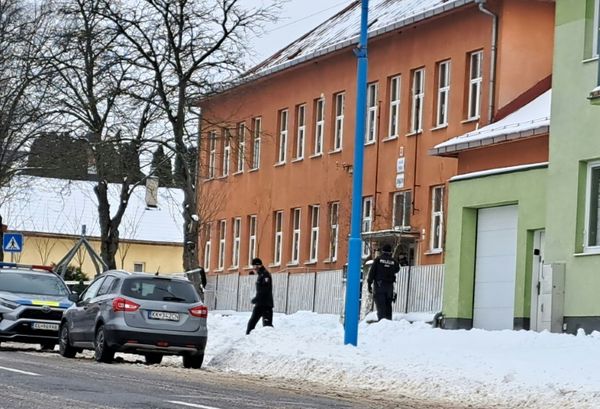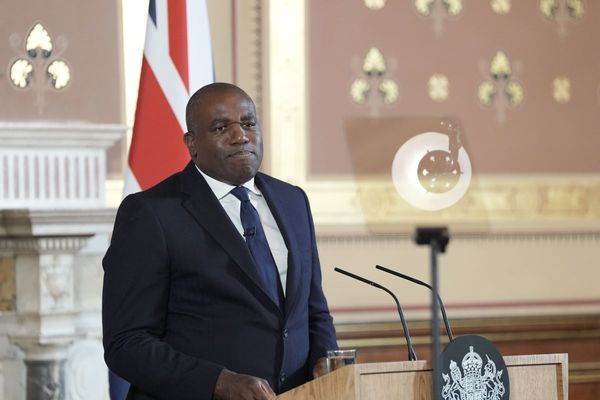
Since South Africa adopted its post-apartheid constitution in 1996, the country has made important strides in realising the right to social security and in reducing poverty and inequality.
Policies, legislation and administrative infrastructure have enabled the government to create an expansive social security system. Two out of three households receive a social grant and 60% of the workforce is covered by social insurance.
South Africa is now an exemplar of an upper middle-income country that has gone further than many others in growing social protection to promote development.
Nevertheless, the country still has persistent and extraordinarily high rates of poverty, unemployment, inequality and low levels of economic growth.
As South Africa marks Human Rights Day on 21 March, it is worth reflecting on what has been achieved, what policies and interventions are needed, and what the future trajectories might be.
What’s in place
Social security consists of several pillars. One of these is social assistance. This is paid by the state to different categories of vulnerable people such as the aged, people with physical and mental disabilities and children and their families.
The net of support was expanded from three million beneficiaries in 1995 to over 18 million in 2022.
The second pillar is social insurance. This takes the form of contributory schemes linked to employment, such as unemployment, health and pension benefits. Informal social and family provision of support also play an important role.
Some other interventions are not generally classified as part of the country’s social security system. These include public employment schemes, school feeding and a social package of free basic services. Free primary health care, free education for poor children, as well as subsidies for early childhood development centres and to NGOs to deliver welfare services, also fall into this category.
More recently, to mitigate the impact of the COVID-19 pandemic, a new temporary Social Relief of Distress grant was implemented. It grew from 5.3 million beneficiaries in 2020 to 10 million in 2022. It is targeted at the unemployed and informal workers who are unable to support themselves.
Social assistance is clearly the bedrock of the country’s social security system. It operates alongside minuscule budgetary allocations for welfare services such as community mental health, substance abuse and gender-based violence among others. Welfare services have historically been underfunded and this trend continues.
But there are some problems with the social security system.
Importantly, it doesn’t adequately address or cater for the problem of unemployment whereas most poor people are unemployed, or employed in precarious and low-wage work and in the informal sector.
In addition, the system is poorly coordinated. There are weak linkages between the different programmes. For example, caregivers who receive child support grants do not have ready access to other services such social and nutrition support, public employment and early childhood education. This undermines the structural efficiency, effectiveness and responsiveness of the system to meet a diversity of needs over the life cycle.
Policy gaps and interventions
The role of social assistance is now widely accepted as the bedrock of the country’s efforts to speed up poverty reduction and income redistribution. What is at issue is how best to achieve this.
Several high-level policy solutions emerged from a policy review I recently conducted for a new book.
Firstly, social security reforms are needed that centre on filling the gaps. These include support for the long-term and chronically unemployed and informal workers.
Secondly, the benefit levels of social grants, especially the child support grant, must be increased to address malnutrition more effectively. The current grant amount is below the food poverty line.
Innovative outreach is also needed to improve inclusion of large numbers of children who qualify, but do not receive the grant. These are estimated to be 17.5% of eligible children.
There is also a growing acknowledgement that unless employment grows – through various public and private measures – and such work is sustainable, social assistance on its own has a limited effect on lifting people out of poverty and in improving income mobility. Employment growth and better-quality jobs would bring more people into the social insurance system and build a larger middle class.
Social and economic challenges that were intensified by the pandemic are likely to continue. This may further deepen structural unemployment, with some jobs being lost permanently. Ongoing monitoring of the economic recovery and of social development indicators over time is likely to aid more effective policy making.
Social policy solutions are needed that extend interim social relief in the short to medium term. These must also address systemic improvements to overcome delivery challenges. South Africa may do well to follow other countries that maintain social registers such as those in Latin America, Indonesia and Mauritius. These enable authorities to identify potential beneficiaries in need and aid in planning. This will in turn improve the responsiveness of social support.
The temporary expansion of social assistance due to the pandemic brings new challenges. If the COVID-19 relief of distress grant is terminated or gradually phased out as the economy begins to recover and generates employment, tricky political issues may arise. There is the potential for significant political destabilisation. This is because the social and humanitarian crises the grant sought to alleviate would persist.
It is thus likely that the COVID-19 relief of distress grant may by default become a basic income grant. It’s not clear what form this might take but the government has announced that it is exploring its options.
Questions remain as to how affordable these policy options are. Cost-benefit analyses will be needed to aid policy engagement and decision making. The costs – and outcomes – will differ depending on whether a basic income grant prioritises those in greatest need or is given to all income groups.
Read more: Basic income support in South Africa: risks, rewards and what it will take
Given the country’s fiscal constraints, consideration needs to be given to the fact that other social policies and social development programmes are likely to be crowded out by the further expansion of income support.
Growing cash transfers at the expense of non-monetary forms of social provision – including health and mental health services, education, early childhood education, social work services, housing and basic services, such as water, sanitation and electricity – could be equally counterproductive.
Carefully designed, innovative and evidence-based complementary interventions are needed. These must build human capital and human agency, strengthen families and boost community-level livelihoods. Alongside other similar interventions, these should ultimately aim at breaking the inter-generational cycles of disadvantage.
Leila Patel receives funding from the Department of Science and Innovation (DSI) and the National Research Foundation for her Chair in Welfare and Social Development, the Faculty of Humanities, and the University of Johannesburg's Research Committee.
This article was originally published on The Conversation. Read the original article.







